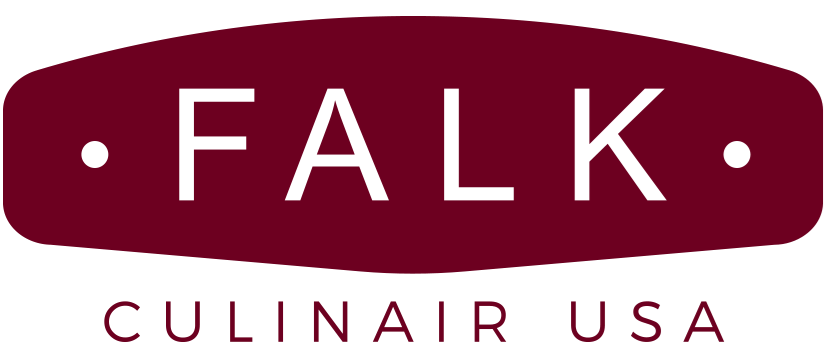Cooking with Copper
Copper is widely recognized by chefs and serious cooks as the material of choice for many cooking applications. The single most important reason is the heat conductivity of copper. When pans are made with copper, they distribute heat evenly and efficiently. A properly designed pan made from thick copper will provide even heat across the entire bottom and up the side of the pan. It will also react quickly to adjustment of the cooking heat. This gives you the control necessary for the most demanding sauces, custards, and searing. If you are new to copper, simply put some water in the pan and add heat. Watch the bubbles form everywhere in the pan. Then change the heat. Watch them start and stop!
Copper also has special anti-bacterial and other chemical properties that make it particularly good for cooking sugar and fruit. Jam made in a pure copper pot will retain its vibrant and true color. Copper's responsiveness to heat also helps you control the final temperature and consistency of your jam.
Most copper pans, however, are lined with tin or stainless steel. This is because copper reacts so much to acidity. Traditionally copper has been coated with tin for cooking most foods. Tin is also a wonderful heat conductor. Many copper pans on the market today have a tin coating. There are two problems with tin as a coating. One is its melting point. It can melt or be damaged at temperatures below 500 degrees fahrenheit. While most foods are cooked well below this temperature, they are encountered in the kitchen. The second is tin's softness. This softness is what allows it to be used as a coating. However, it also means it wears out. Tin coating will eventually need to be redone. Technology developed by the Falk Culinair company has made it possible to fuse copper with stainless steel. Stainless steel does not conduct heat as well as copper or tin; but, its safety in food contact, durability and clean appearance far outweigh this disadvantage. By using 2.3 mm of copper and only 0.2 mm of stainless steel we balance the advantages of these two metals creating cookware with professional performance and everyday practicality.

Cooking with copper also contributes to sustainability in two ways. First, you will require less energy to cook with. You will preheat faster and cook at lower temperatures. Second, these pans will last a lifetime. You will not have to throw them away because the surface has been compromised. In some families these pans become heirlooms that are passed on to the next generation!














